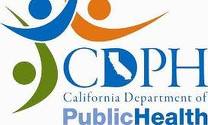NEWS: California's Lyme advisory committee to meet March 13

The annual meeting of California’s Lyme Disease Advisory Committee is open to the public, in person or by phone.
Committee members represent Lyme patients and advocates, university researchers, vector control districts, the California Medical Association, county health officers, and the California Department of Public Health. Public comment is held at the end of the meeting, with individual speakers limited to three minutes.
.
Lyme Disease Advisory Committee Meeting Agenda
Thursday March 13, 2014, 9:30 a.m. – 1:00 p.m.
California Department of Public Health
1500 Capitol Avenue, Conference Room B, C
Sacramento, CA 95814
http://www.cdph.ca.gov/services/boards/ldac/Pages/default.aspx
Call in number: 866-723-1793
Participant passcode: 7893538#
Schedule:
Refreshments (9:30 a.m.-10:00 a.m.)
Opening comments
Committee member updates
CDPH progress report ( Denise Bonilla, MS, MS)
Preview of 2014 goals
Update on tick and human surveillance and reporting
Comparative sampling of substrates for Ixodes pacificus nymphs at three Sierra Foothill sites (Mark Novak, PhD)
Impact on messaging (committee discussion)
Tick identification card update (Claudia Erickson, MS, CHES)
Suggestions for update (committee discussion)
Lyme disease case reporting (Anne Kjemtrup, DVM, MPVM, PhD)
Public comment*
Adjourn
*Public comments are important to this committee. However, due to time constraints, comments will be limited to 3 minutes. If a speaker feels that more time is needed, prior approval from the Committee Chair is required. Contact Mr. Chris Parlier (chrisparlier@sbcglobal.net ).




















Dear Members of the Committee,
Thank you for giving attention to this important matter. Having witnessed the debilitating downward spiral of the lives of once fully functional citizens infected by Lyme for the long term, I appeal to you to consider the following suggestions to unveil the true scope of this brewing epidemic. #1 Make concerted efforts to educate the public about all known means of infection, not just ticks, but also a number of parasitic insects, mother-to-child, and now possibly sexual transmission. #2 Fund and conduct intensive research programs to validate the transmission factors (point #1) and eliminate perpetual medical arguments on the subject once and for all. #3 Reinforce public education that Lyme disease for most victims is a complex incidence of multiple co-infections, some of which potentially more debilitating or more deadly than borrelia, like babesia, a cousin of malaria. #4 Fund and conduct focused, in-depth research to find desperately needed cures and pain relief for the multitude of suffering long-term patients. #5 Introduce new laws requiring medical insurance companies to formally recognize and cover long-term medical costs of care for long-term Lyme patients, and protect doctors undertaking such care from retribution. #6 Train and educate the body of medical practitioners at large on the latest comprehensive methods of diagnosis and testing to increase chances of catching and neutralizing the disease in its earliest stages. #7 Finally, mandate that the entire medical industry treat Lyme patients with dignity and respect, recognizing that long-term or life-long incapacitation and suffering deserves no less compassion than short-term terminal outcome. Thank you for your time.